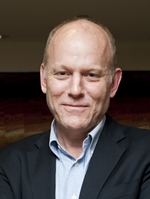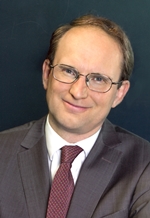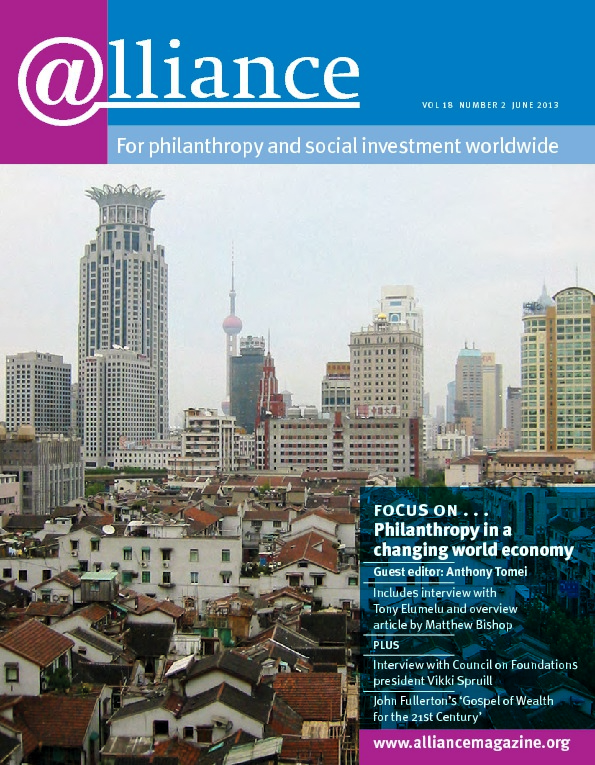It wasn’t so long ago that trustees of endowed foundations could spend 5 per cent of the value of their portfolio each year on their mission, confident that the residue would maintain its value in relation to inflation, allowing them to go on doing good indefinitely. Those days, it seems, are over, and some calculations suggest that approaching 3.2 per cent might be a more sustainable spending level for foundations wanting to exist in perpetuity. But are perpetuity and spending out the only options? This article suggests a third way.
The 2013 Credit Suisse Global Investment Yearbook, published in February this year, records a decade during which investment returns have barely kept pace with inflation and predicts continued low returns across all investment classes for the foreseeable future. The yearbook was published on the same day the UK Association of Charitable Foundations published a report I co-authored with Kate Rogers, a UK investment adviser with Schroders Charities, on how long-term charity investors approach spending on their charitable aims.[1] In that report we found that a more ‘sustainable’ rate for a typical portfolio could be around 3.2 per cent – well below the 5 per cent set by the US Internal Revenue Service, and below even the 3.5 per cent agreed in Canada.
While fiscal austerity means that there is less public money around, continued low market returns mean that foundations that rely on investments to fund their activities are having a tough time too. And all the while the social needs foundations exist to address are increasing.
So foundations are apparently faced with a choice: fulfil their duty to future generations and cut expenditure now or set a time limit for their activity and spend out. Our research, however, identified another ‘open-ended’ approach being taken by foundations. It also made us question the fundamental thinking behind the prevalent approach.
Preservation really? Questioning the default
An extremely influential idea in endowment management (‘endowment’ is a word used to describe investments held in trust for a charitable purpose) is that of ‘intergenerational equity’. The concept is little known among philanthropy professionals but influential among investment advisers, especially in the form James Tobin, former Sterling Professor of Economics at Yale University, defined it in 1974: ‘The Trustees of endowed institutions are the guardians of the future against the claims of the present. Their task in managing the endowment is to preserve equity among generations.’[2]
In practical terms ‘intergenerational equity’ has meant that those managing endowments calculate their expenditure so as to preserve the value of the portfolio by spending only the excess of returns over inflation. During the 1980s and 1990s, that was quite possible. But it has not been possible for most charity investors since the beginning of the millennium when average portfolio returns have barely kept pace with inflation – at least in the UK market where we did our research. So the model is problematic in practice – but also in theory.
Underlying the intergenerational model is an assumption that amounts to belief in a pot of money which, through the alchemy of the stock market, is able to support constant spending that rises with inflation while similarly replenishing itself in the same way for infinity.
While it is attractive to see endowments as the gifts that keep on giving, the reality is that preservation of value is only ever a probability and never a certainty. Using historical market information and Schroders Charities forecasts, we calculated that that probability could be as low as 50/50 for those spending around 4 per cent of their portfolio value over the next 30 years.
To be sure preservation is often achieved over a number of generations but, given the inherent uncertainty in the markets, the idea that the fluctuating value of the portfolio should be the main guide by which to steer spending policy is questionable, and dangerous if temporary falls cause trustees to put a brake on spending too soon.
Given that only some foundations are obliged to be legally permanent, should those that aren’t ‘spend out’?
The ‘open-ended’ option
‘Spending out’ or ‘limited life’ has become a more talked-about option recently – for philanthropists who want to address pressing needs and see good done in their lifetime, or who are reluctant to set up institutions. But if you are addressing a long-term issue or supporting a specific community with a unique asset, it might not be the best option from a mission point of view.
Perpetuity is not the only other choice. It is possible to take a more open-ended approach. For example, in the UK the Barrow Cadbury Trust, a family foundation set up by wealthy confectioners in the 20th century, has assets of around £80 million of which they spend between 5.5 and 6 per cent annually. Its mission is social change. The foundation’s trustees know that, in the current climate, spending at their current rate could erode the value of their portfolio. They have decided to continue to spend to meet today’s pressing needs. But they have not decided to spend out. Instead they are open to existing for generations if market returns turn out to exceed current forecasts or if trustees decide at some point in the future to change strategy and reduce spending.
Open-ended foundations, then, are those that are prepared to take more risks with longevity. They calculate spending according to what seems right for the mission rather than for preservation of the endowment, aware that this means they might not be around at some point in the future.
Determining your attitude to the long term
So perhaps the guiding question for trustees should not be ‘how much will the markets allow us to safely spend?’ but ‘what is our attitude to the long term?’
Limited-life or spend-out foundations have a clear and fixed view of their time horizon. Foundations committed to perpetuity will have a strong sense that their being around for the very long term is key to their mission. As such they will have less tolerance for their own mortality and will correspondingly reduce spending in order to increase their chances of operating at the same scale for ever. Open-ended foundations, as we have seen, will be prepared to take more risks with mortality and will be prepared to respond to the changing environment more flexibly, including gradually scaling up or scaling down their operation accordingly.
But no matter what their attitude to the long term, all trustees might find it helpful to see themselves as stewards of resources who have been charged with a mission rather than as guardians of money worrying about how to preserve it. While guards keep treasure or prisoners safe under lock and key, letting no one in or out, stewards shrewdly care for their resources and replenish their stores in order to be able to keep on giving out good things for as long as they can.
Stewards, not guardians
This idea of a third way between perpetuity and limited life fits well with a growing move for foundations to view their assets more holistically and creatively. Rather than seeing themselves as the guardians of capital and dispensers of grants that comprise a small amount of their money, ambitious trustees are beginning to see that they have many levers for change at their disposal. They can use their endowment to invest in companies that align with their mission; as share owners, they can use their voting rights to influence company policy; and they can invest in social purpose companies that will deliver a social impact as well as a financial return. And beyond their financial clout, foundations also have their reputation, their convening power, their staff, and the social capital and connections their trustees can call upon.
The most clearly articulated version of this comes from the US F B Heron Foundation: ‘We plan to invest 100 per cent of our endowment – as well as other forms of capital – for mission. And beyond money, we are obligated to deploy all the resources at our disposal – capital, revenue, ideas, talents, influence, natural allies – toward a broad, multi-sector approach.’
Engaging others in the cause
The times are also causing foundations to think about collaborators and supporters. This trend fits well with the ‘open-ended’ approach as it can open up the possibility of attracting more money to replenish the endowment.
Attracting ongoing philanthropy is an old story for many North American foundations and ancient universities, for whom new donations are an essential part of the philanthropic mix. However, it’s a new way of thinking for many European foundations, which are used to existing as wholly autonomous agents with hermetically sealed finances. Times may be changing those ingrained attitudes. A survey by Foundation Source (reported in Alliance’s January 2013 eBulletin) found that of 519 foundations surveyed, 88 cents of new money was given on average for every dollar spent. This means that while endowment values still dropped, giving could be kept high at an average 11.6 per cent of assets.
Conclusion
There are no single right answers for foundations, especially when the environment is changing so rapidly for so many. We started with the question many endowed foundations are asking now, which is ‘how much can I spend?’ and looked at what lies behind it. What we saw was trustees’ assumption that their mission involved one of two options: to preserve intact the value of their endowment for all time or else to spend it all within a particular time frame.
Instead our research showed us a range of thoughtful practices, including the ‘open-ended’ approach where trustees, recognizing that they must take calculated risks all the time, are prepared also to risk their own future. As people think through what it means to be a steward of their resources, we hope that this finding may help open up creative thinking and lend confidence to those who are looking for a third way.
Richard Jenkins is a charity and foundation specialist. Email mail@richardjenkinsconsulting.com
[1] Richard Jenkins and Kate Rogers (2013) For Good and Not for Keeps: How long-term charity investors approach spending on their charitable aims. http://www.acf.org.uk/publicationsandresources/publications/index.aspx?id=98&eid=4191
[2] J Tobin, ‘What is Permanent Endowment Income?’ American Economic Review 64(2): 427-34.
![]()
Comment Sara Llewellin
 Established in 1920, the Barrow Cadbury Trust still has a board mainly comprising fourth- and fifth-generation family trustees. The founders consciously wrote absolute discretion for future trustees into the trust’s deed and the endowment (currently about £80 million) is expendable.
Established in 1920, the Barrow Cadbury Trust still has a board mainly comprising fourth- and fifth-generation family trustees. The founders consciously wrote absolute discretion for future trustees into the trust’s deed and the endowment (currently about £80 million) is expendable.
Historically, the trust has always put its mission before the certainty of perpetuity. Previous generations have spent what was needed for the job in hand and have been both fortunate and generous enough to ‘top up’ the endowment when it became depleted. The current board of trustees has taken the strategic decision for the immediate future (2013-16) to continue to spend at our current rate, which is between 5.5 and 6 per cent. This is both because counter-cyclical giving is appropriate in austere times and because our programmes of work are reasonably mature: to cut them back abruptly would be irresponsible and wasteful of monies already spent and collaborations that are flourishing.
The orthodox might consider this approach careless, but it is nothing of the kind. The board sees projections every six months that calculate (albeit this is an inexact science) the ‘point of no return’ for inevitable spend out.
We are neither a perpetual nor a limited-life foundation. We will pursue our vision and mission with all the resources available to us and consider our options as we go. That may mean attracting funds from elsewhere and it already involves using some of our endowment for social investment which will be used again and again.
Having direct descendant board members brings both benefit and potential risk. While our founders made it very clear to their children and their children’s children that charitable money held in trust is no longer family money, nevertheless the stewardship of the trust is a family heritage and privilege. As such, the age-old tension between the needs of the present and those of the future also extends to the changing vision of successive generations and the desire, perhaps, to hand the trust on to those that follow. Each generation must make way for the vision and ideas of the next.
The question of ‘intergenerational equity’ therefore takes on a rather more nuanced meaning in our case. On the one hand, as Bertolt Brecht put it: ‘We plant trees for those born later’; on the other, we must guard against giving priority to trusteeship over mission just as carefully as we guard against putting the endowment before the mission.
Sara Llewellin is executive director of the Barrow Cadbury Trust. Email s.llewellin@barrowcadbury.org.uk
![]()
Comment Phillip Henderson
 The question of intergenerational equity is freighted with additional meaning in a family foundation like Surdna. At 96 years old, Surdna is testing the limits of what it means to be a family foundation.
The question of intergenerational equity is freighted with additional meaning in a family foundation like Surdna. At 96 years old, Surdna is testing the limits of what it means to be a family foundation.
Our board comprises a dozen or so distant cousins, aunts and uncles from the vast Andrus family tree, now four and five generations removed from our founding donor. Board members see it as their duty to protect the legacy of the foundation and to preserve assets for future generations. And these future generations, ‘future guardians’ to use Richard Jenkins’ term, are, very specifically, their children and grandchildren. We are committed to the 5 per cent payout requirement and rarely do more because we are aware that long- term real returns struggle to reach much beyond that. If we want to be perpetual, we have to be disciplined on the spending side, sometimes spending less.
Our foundation board periodically revisits our assumptions about perpetuity. With our long historical perspective and with the generations of Andrus family members’ work prominently in their minds, family members are hard pressed to find reason to spend more aggressively. With a laundry list of institutions created and amazing projects funded (and, yes, a few spectacular failures), coupled with the incredibly complex problems that exist in our societies, trustees at Surdna, and indeed at other decades-old foundations, have powerful reinforcement to remain perpetual.
But Jenkins is right to point out that thinking purely in terms of perpetuity vs spend-out misses an important larger conversation. I, too, am taken with the vision that Clara Miller has brought to the F B Heron Foundation, which has many of us foundation presidents thinking hard about just what assets our foundations really have and how they can be deployed most effectively. It’s not really about investment returns and spending rates but about a more complex set of ideas around impact, social change and, yes, intergenerational equity.
In the US, we are not only seeing new philanthropists testing the assumptions of perpetuity; we are seeing innovative hybrid efforts like that of the Omidyar Network, which approaches philanthropic work as an exercise in investment, not charity. These new models of philanthropy are less concerned about the prosaic questions around endowments and portfolio management and much more interested in the blurry line between social enterprise and philanthropy. These hybrid approaches, it seems to me, are the important wave to be watching. If old-style philanthropy like Surdna looks carefully enough, we might find a path to perpetuity that embraces the investment realities that Jenkins observes but also takes advantage of the possible new approaches that F B Heron and Omidyar are showing us.
Phillip Henderson is president of the Surdna Foundation. Email phenderson@surdna.org
![]()
Comment Antti Arjava
 What Richard Jenkins suggests seems to be a third way for foundations that are considering spending out. Although it is not exactly strategic (it sounds like jumping into an ocean and keeping resolutely adrift until you see where the currents have taken you), it is a reasonable policy in some specific circumstances.
What Richard Jenkins suggests seems to be a third way for foundations that are considering spending out. Although it is not exactly strategic (it sounds like jumping into an ocean and keeping resolutely adrift until you see where the currents have taken you), it is a reasonable policy in some specific circumstances.
I do share Jenkins’ concern that trustees may take too rigidly their duty to preserve capital. However, for foundations that aim to be around for ever, I would present the ‘flotsam and jetsam strategy’ in a more cautious way. A good compromise is counter-cyclical thinking, an alternative that is already hidden in Jenkins and Rogers’ report.
From late summer 2007 until spring 2009, the Finnish Cultural Foundation was losing €1 million a day in asset value. Like many Nordic, British and other European foundations, we did nothing; we just kept our spending as before. In our worst scenario, we were prepared to show a deficit of as much as half of our expenditure for a couple of years. This was not the ‘third way’, because it was based on the belief that sooner or later the budget would again be balanced – as it now is, so far.
Foundations with 50–80 per cent of their assets in equities must tolerate volatility. And they should keep spending when governments are cutting. Of course, it is easier if you have hoarded reserves in advance – which is again a wise policy, because the marginal utility of money spent in good times is less than in bad times. This ability to think over cycles may be one of the justifications for foundations existing and enjoying legal benefits.
I agree with Jenkins and Rogers on most issues, including the claim that forecasting returns is too imprecise to be really useful. In fact, foundations should have the courage, prudence and patience to outdo a passive model portfolio. When everyone else wants to buy, they can sell, and when the others desperately try to sell, the foundations can again be there with the cash. This is charitable (at least for the distressed speculators), but also quite rewarding in the long run.
In sum, the third way is open for some foundations. However, since many of us support permanent causes (like scientific or artistic work), a fourth way emerges: counter-cyclism, regarding both investments and expenditure. Perhaps the ways differ more in rhetoric than in practice.
Antti Arjava is secretary general of the Finnish Cultural Foundation. Email Antti.Arjava@skr.fi



Comments (0)